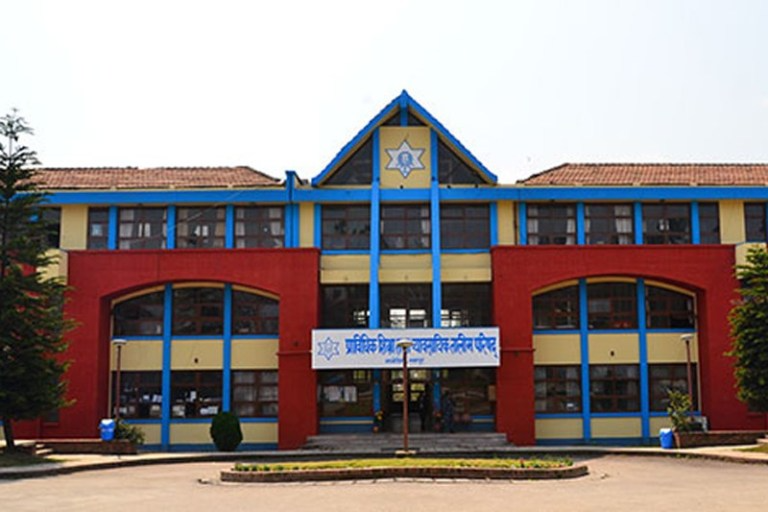CTEVT: Nepal's Key to Creating a Skilled and Strong Workforce
Nepal, a place of spectacular natural beauty and rich legacy, has the issue of providing work opportunities for its youth. The Council for Technical Education and Vocational Training (CTEVT) is a game changer in this attempt. It is Nepal's top organization for technical and vocational education and training (TVET). It was established in 1989 under the CTEVT Act, 2045 (B.S.).

CTEVT aspires to be a global leader in technical education, devoted to offering top-tier training for the workforce of the twenty-first century. Its aim is to design and manage Nepal's technical education and training, ensuring that our nation has competent personnel for progress.
CTEVT's Role and Functions:
The CTEVT is the driving force behind Nepal's technical education. Some of its primary roles are as follows:
- Designing and Developing Courses and Standards: CTEVT creates and develops technical education courses and standards to ensure they meet the demands of real-world jobs. This helps to guarantee that CTEVT graduates have the necessary skills and knowledge to succeed in the employment market.
- Tests and Certificates: CTEVT administers tests twice a year, in June and December, and issues certificates and diplomas to students who pass. CTEVT certifications and degrees are accepted by the government of Nepal as well as private sector enterprises. This provides CTEVT graduates with an advantage in the employment market.
- Supporting Training Centers: CTEVT gives money and assistance to various training institutions, so that they can continue their valuable work. This contributes to ensuring that CTEVT students have access to high-quality education and training.
- Developing Global Partnerships: CTEVT engages with national and international organizations to broaden Nepal's reach in technical education. This enables Nepali students and graduates connect with worldwide possibilities.
- Promoting Innovation: To keep education current and prepared for the future, CTEVT encourages research and development in TVET. Through its Startup Challenge and other initiatives, CTEVT also promotes student creativity and entrepreneurship. This aids in preparing CTEVT graduates for the possibilities and difficulties of the workforce of the twenty-first century.
Courses Offered by CTEVT:
CTEVT through its constituted, partnership, TECS and privately affiliated schools has running various courses on Health, Engineering, Agriculture, Hospitality, Forestry and Various trades in Diploma level or proficiency certificate level. Meanwhile, TSLC level programs are offered in Health, Agriculture, Engineering, Social mobilization, office management, tourism etc trades. The entry requirement for TSLC level is SEE appeared candidates for the course of 18 months whereas for the diploma programs student must secure atleast 2 GPA with "C" in English, Math and Science for Health Subject and atleast 1.6 GPA with "C" in Math and Science and "D" in English. Various proficiency/diploma and TSLC level programs are mentioned in details as follows:
#Certificate/Diploma level programs: The entry requirement for 3 years certificate/diploma level programs is SEE/ SLC passed.
1.) Agriculture
- Diploma in Agriculture (Animal Science)
- Diploma in Agriculture (Plant Science)
- Diploma in Food and Dairy Technology
2.) Engineering
- Diploma in Civil Engineering
- Diploma in Mechanical Engineering
- Diploma in Electrical Engineering
- Diploma in Electronic Engineering
- Diploma in Geomatics Engineering
- Diploma in Computer Engineering
- Diploma in Information Technology
- Diploma in Architecture Engineering
- Diploma in Hydropower Engineering
- Diploma in Electrical and Electronics Engineering
- Diploma in Auto Mechanical Engineering
- Diploma in Bio-Medical Equipment Engineering
- Diploma in Ref. and A/C Engineering
3.) Health/Medical Science
- Proficiency Certificate in General Medicine
- Proficiency Certificate in Nursing
- Proficiency Certificate in Medical Lab Technology
- Proficiency Certificate in Radiography
- Proficiency Certificate in Ayurvedic Science
- Diploma in Pharmacy
- Diploma in Dental Science
- Diploma in Ophthalmic Science
- Diploma in Physiotherapy
- Diploma in Acupuncture, Acupressure and Moxibustion
4.) Hospitality and others
- Diploma in Hotel Management
- Diploma in Entrepreneurship Development
- Diploma in Social Works
- Diploma in Forestry
#TSLC programs: The entry requirement for following TSLC programs is SEE/ SLC completed
1.) Agriculture
- JTA (Animal Science)
- JTA (Plant Science)
2.) Engineering (Sub-overseer)
- Civil
- Mechanical
- Electrical
- Electronic
- Automobile
- TSLC in Computer Engineering
- Air-conditioning and refrigerator
- Sanitary
- Survey
3.) Health
- CMA
- ANM
- AAHW
- Lab Assistant
4.) Hospitality and others
- TSLC in Culinary Arts
- TSLC in Social Mobilization
- TSLC in Entrepreneurship Development
- TSLC in Computer Application and Secretarial Management
CTEVT provides specialist courses in developing disciplines such as artificial intelligence, machine learning, and renewable energy in addition to these broad categories. This contributes to CTEVT alumni being equipped for the most in-demand occupations of the future.
Where Can I Study CTEVT Courses?
With almost 1,000 institutions in its network, CTEVT has a broad reach.
- KOSHI PROVINCE
- MADHESH PROVINCE
- BAGMATI PROVINCE
- GANDAKI PROVINCE
- LUMBINI PROVINCE
- KARNALI PROVINCE
- SUDUR PASCHIM PROVINCE
Various programs are available in Nepal, both public and private. Some well-known institutes are:
- Technical University of Kathmandu
- Purbanchal University
- University of Pokhara
- Nepal Institute of Polytechnic
- The Polytechnic Institute of Biratnagar
- Central Office of CTEVT
- Technical Training Center CTEVT
- Vocational Training Center CTEVT
CTEVT is expanding its network of rural centers and providing online learning opportunities in an effort to increase access to education. Additionally, CTEVT aims to lower the cost of education for kids from low-income households.
Benefits of CTEVT Education:
CTEVT education has several advantages, including:
- Increased work Opportunities: CTEVT alumni have a variety of work options. They can work in government, business, and non-profit organizations. CTEVT graduates are in high demand in Nepal and throughout the world.
- Better Earning Potential: CTEVT graduates often receive better earnings than their general education colleagues. This is because CTEVT graduates possess the skills and expertise that businesses want.
- Improved Skills and information: CTEVT courses are designed to offer students with the necessary skills and information to be successful in the labor market. Graduates of CTEVT are well-known for their abilities, expertise, and work ethic.
- Confidence: CTEVT education may assist students in developing their abilities and knowledge, which can enhance their confidence. CTEVT alumni are more likely to create their own firms and assume positions of leadership in their jobs.
Why is CTEVT necessary to Nepal?
CTEVT is significant for Nepal since it is critical to the country's growth. CTEVT graduates are the economic backbone of Nepal, propelling growth and prosperity. CTEVT education also aids in the reduction of poverty and unemployment, as well as the promotion of social fairness and inclusion.
The Future for CTEVT
CTEVT is dedicated to developing with the times in order to satisfy the demands of the workforce of the twenty-first century. Here are some of its future priorities:
- Relevant Courses: CTEVT is always assessing and upgrading its courses to ensure they are relevant to labor market demands. CTEVT is also creating new courses in cutting-edge disciplines including artificial intelligence, machine learning, and renewable energy.
- Accessibility: CTEVT is aiming to make education more accessible to students from all backgrounds. CTEVT is expanding its rural locations and expanding its online learning opportunities. CTEVT is also aiming to make education more accessible for children from low-income households.
- Greater Collaboration: CTEVT is seeking to increase its collaboration with the commercial sector and other stakeholders. CTEVT collaborates with companies to produce curriculum and offer internship and job placement opportunities to students. CTEVT also collaborates with the government and non-governmental organizations to promote TVET and raise awareness of the benefits of TVET education and training.
- Innovation and Entrepreneurship: CTEVT assists its alumni and students in pursuing innovative and entrepreneurial endeavors. Through CTEVT, students may develop their ideas and launch their own businesses by giving them access to tools and coaching. Additionally, CTEVT organizes contests and events to encourage entrepreneurship and innovation in the TVET industry.
Nepal's key to opening the door to a better future is CTEVT. It creates courses, administers tests, and provides a wide range of courses in its capacity as the center for technical education. Graduates have more confidence, improved employment possibilities, and higher income. CTEVT contributes significantly to Nepal's development by lowering inequality and poverty.
With CTEVT always changing to suit the demands of the twenty-first century, the future seems bright. CTEVT is poised to make Nepal's workforce globally competitive via its dedication to relevant courses, accessibility, greater collaborations, and the promotion of innovation and entrepreneurship.
Q&A
1.)What are the top priorities for CTEVT in the future?
CTEVT's future aims include making education more accessible and cheap to all Nepalis. Supporting entrepreneurship and innovation for economic progress.
2.) How does CTEVT make education more accessible ?
CTEVT is making education more accessible by:
- expanding its network of campuses and training facilities throughout Nepal.
- Offering online and remote learning courses.
- Scholarships and financial help are given to deserving students.
3.) How does CTEVT encourage and promote innovation and entrepreneurship?
CTEVT promotes innovation and entrepreneurship by doing the following:
- CTEVT promotes innovation and entrepreneurship via the establishment of innovation and incubation centers on its campuses.
- Offering startup cash and other assistance to students and graduates who want to establish their own enterprises.
- Collaboration with private-sector groups to help entrepreneurs.
4.) How can I apply for a CTEVT program?
You can apply for a CTEVT course by visiting the CTEVT website or contacting your preferred CTEVT campus or training location.
5.) What are the eligibility for CTEVT courses?
The qualifying criteria for CTEVT courses vary each subject, although most need at least a grade 10 (SLC or SEE) or 12 diploma.
6.) What are the fees for CTEVT courses?
CTEVT course fees vary depending on the course and the school, but are typically reasonable and accessible to students from all backgrounds.
7.) What is the Innovation and Incubation Center at CTEVT?
The CTEVT Innovation and Incubation Center assists students and alumni who are creating new goods and services. The center provides a range of resources, such as workspace, equipment, and mentoring.
8.) What exactly is the CTEVT Startup Challenge?
The CTEVT Startup Challenge is a competition that encourages students and recent graduates to create their own enterprises by providing prizes and other assistance to the winning teams.





